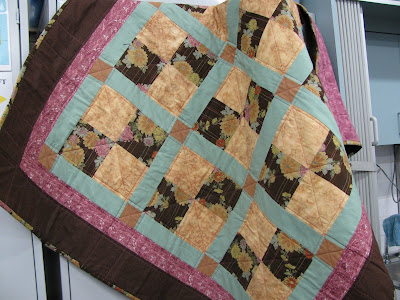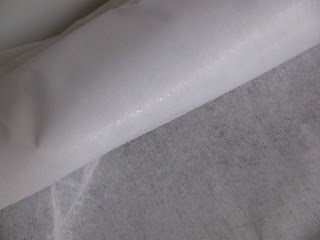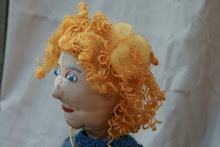
The construction is fine.
- * The lining all sits nicely.
- * I even managed the crazy inside-out trick of sewing the outer shoulder seam from within a space only a few inches across, which was necessary to finish it all off with no raw edges visible
- * and I've pretty much got the fit of these tops down pat, since I've made several of them recently. It fits a lot better on me than it does on the manequin.
I like the colour. And of course, the whole point of the exercise was that it would team up with the skirt I made myself a few weeks ago.
But . . . I made a significant tactical blunder, and as soon as I put it on to wear it yesterday and looked at myself in the mirror it was glaringly obvious. The lower front section of the top is several shades lighter than the upper front section. And the skirt is, of course, the same colour as the upper front section. Which leaves me with a big band of lighter colour right across my middle. At 5-foot 2 and a bit inches with a waist measurement of 114 cm and a DD or E cup bust fitting, I just can't afford to have a big band of lighter colour right across my middle!
So, I've been reminded of something I ought to have known: beware of colour placement! I can see how I made the mistake. I thought about the colour placement in terms of the top itself, and even though the hand-dyed fabric was lighter, I though I'd get away with it because it seemed to match pretty well, but I didn't think about what else I would be wearing with this top. There's no way I would wear a skirt or pants in as light a colour as the hand-dye. The only rescue I can think of at this stage is to throw the whole thing into a dye bath when I next have a suitable colour handy and see if I can get the colour more uniform. Of course, then it won't match the skirt, unless I throw that in the dye bath too.




 3. I finished the raw edges at the top of the bag by turning them to the inside and adding the bright orange casing for a cord. The row of orange stitching holds it all together.
3. I finished the raw edges at the top of the bag by turning them to the inside and adding the bright orange casing for a cord. The row of orange stitching holds it all together.


 I've folded over a corner of the fabric so you can see that it's not visible on the right side, though the fabric does, of course, handle differently.
I've folded over a corner of the fabric so you can see that it's not visible on the right side, though the fabric does, of course, handle differently.  Here's a close up, which demonstrates how eye-smacking the fabric is, but also how I've made two flat pieces of fabric into a 3-D cover for a cardboard box:
Here's a close up, which demonstrates how eye-smacking the fabric is, but also how I've made two flat pieces of fabric into a 3-D cover for a cardboard box:








 I decided I could get away with it for the lining--I've had enough of unpicking for a bit.
I decided I could get away with it for the lining--I've had enough of unpicking for a bit.









